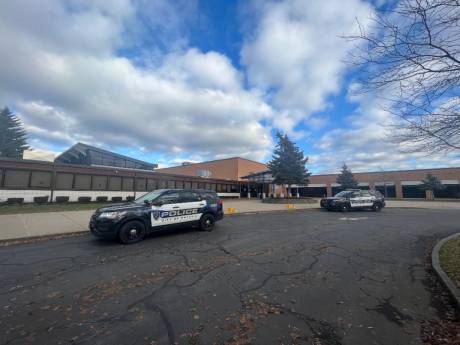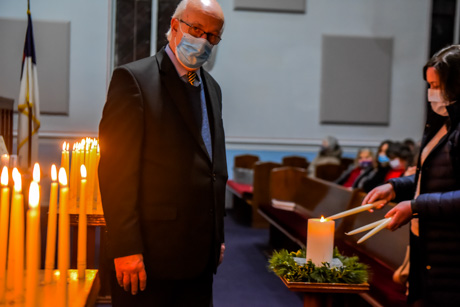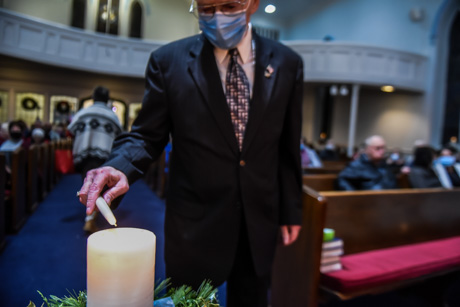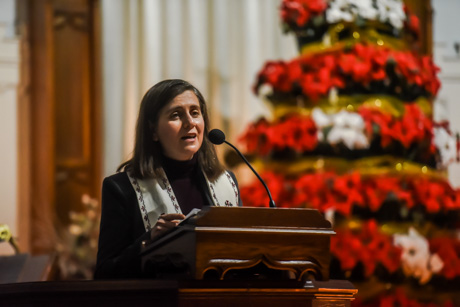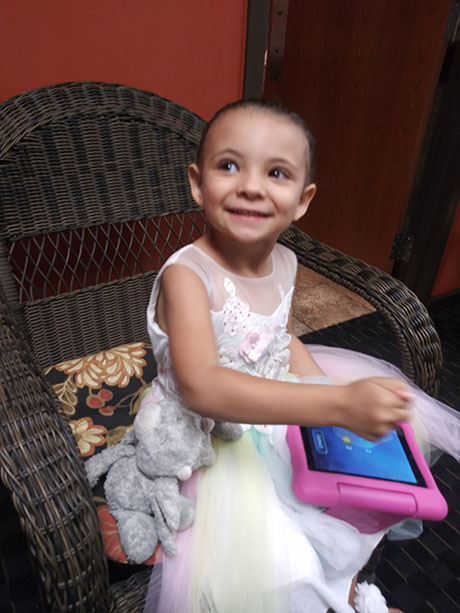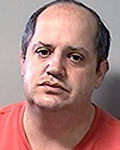Genesee, Orleans healthcare, government officials making push to 'boost' lagging vaccination numbers
With the percentage of Genesee and Orleans county residents who have received at least one dose of the COVID-19 vaccine significantly less than the New York State number, local healthcare and government officials are stepping up their efforts to reach those who, for one reason or another, are among the “vaccine hesitant.”
Speaking during a media briefing via Zoom this morning, Genesee/Orleans Public Health Director Paul Pettit reiterated what he has been saying for the past year: “That vaccines are the best protection against the coronavirus … and against severe illness and death.”
Statistics provided by Pettit reveal that 61.8 percent of Genesee County residents and 59.3 percent of Orleans County residents, when looking at the total population, have received at least one dose of the Moderna, Pfizer or Johnson & Johnson vaccines. (The first two are administered in two shots; J&J is one shot).
That pales in comparison to the state as a whole, with the percentage of the total population that has received at least one shot at 79.4 and the percentage of those 18 and older at 91.8.
When looking at the completed series, Genesee County’s number falls to 55.9 percent and Orleans is at 52 percent. In the age 5-11 category, Genesee is at 10.6 percent and Orleans at 9.5 percent.
For the eight-county Finger Lakes Region, the one-dose percentage is at 70.7 percent and the completed series percentage is at 63.1 percent, Pettit reported.
“That’s why we again are trying to get our vaccination rates up as high as we can,” he said. “COVID vaccines significantly reduce the likelihood of hospitalization and death.”
Pettit placed special emphasis on the vaccine booster shots that recently became available.
“We just need to go and get that booster shot now and make sure we're protecting ourselves as best as we can,” he said, adding that both Genesee and Orleans health departments continue to offer weekly COVID-19 vaccination clinics (Wednesdays in Genesee County and Thursdays in Orleans County).
Joining Pettit on the call were Dan Ireland, president of United Memorial Medical Center; Matt Landers, Genesee County manager; Marianne Clattenburg, Genesee County legislator, and Lynne Johnson, Orleans County Legislature chair.
Acknowledging the need to improve Genesee County’s vaccination numbers, Landers – as initially reported on The Batavian – mentioned the Finger Lakes Region’s push for a “targeted rural campaign” focused on hard to reach populations such as Native American, Amish and Mennonite, hard to reach zip codes and under vaccinated zip codes.
“We’re trying to find more creative ways to attack and go after targeted media advertising towards them,” he said, adding the plan is to use direct advertising, postcards and other mailings. “Their targets are not necessarily trying to change minds of people that are absolutely set, but it's really to educate, to go after vaccine hesitancy and to go after some of the harder to reach populations potentially …”
On the hospital side, Ireland said UMMC and Rochester Regional Health’s “number one priority” is to maintain full access to healthcare in the community, noting that UMMC is open for all types of elective surgeries at this time.
He also pointed out the importance of getting vaccinated, wearing masks where appropriate and getting tested, especially prior to social or family gatherings.
He said that his family did just that before Thanksgiving and, fortunately, no one tested positive.
“So, really it’s a small step, but it makes a big difference,” he said. “And it will help us on the hospital side. Because certainly as we continue to have a fair number of unvaccinated in the community. It makes a difference when they become positive as we're seeing a higher percentage of unvaccinated patients in our hospital versus the vaccinated COVID patients.”
Statistically, Ireland said that there are more than 200 patients who have tested positive for COVID in RRH hospitals, with 11 percent of those at UMMC. Sixty-two percent in the Intensive Care Unit are COVID positive, with 80 percent of those people unvaccinated.
“Put in non-statistical terms, the unvaccinated truly are showing signs of higher acuity in the hospital,” he said, noting that 100 percent of patients on ventilators are unvaccinated.
Ireland said UMMC continues to partner across the RRH system and with other hospitals in the region to “work on any load balancing options that we can provide; in order to make sure that all patients in our region get care, regardless of where you seek that care.”
He added that 95 percent of RRH outpatient clinics are open, although he did say that wait times may be longer than normal.
Looking at specific areas of concern:
COMMUNITY SPREAD
Pettit said the number of positive cases have remained steady recently but are still too high, with 250 active cases in Genesee County and 334 active cases in Orleans County. Forty-eight of those are in the hospital (35 in Genesee and 13 in Orleans).
Over the past seven days, the positivity rate in Genesee and Orleans is at 12.5 percent and 12.2 percent, respectively.
As far as breakthrough cases are concerned (positive tests of those who are fully vaccinated), Pettit said the percentages are 30 percent in Genesee and 29 percent in Orleans – with these types of cases increasing over the past two months.
He urged those who have been vaccinated with Moderna or Pfizer at least six months ago and those who had the J&J vaccine at least two months ago to get a booster shot.
Pettit pointed out that most of the spread is from social gatherings "where there's prolonged contact indoors" and from those who think they just have a cold (due to it being cold and flu season).
"So, again, one of our messages we've said from day one is if you're symptomatic, stay home, don't go to work, don't go to school, stay home while you have the symptoms, get that test and verify," he said. "Regardless of COVID, we don't want to be spreading germs around."
COVID-19 TESTING
Pettit said that limited testing is being offered at both health departments by appointment, and that local pharmacies and urgent care centers also are providing testing.
He advised that home testing kits will become more prevalent as time goes on, and that GO Health is getting closer to accepting results of home testing.
“Ultimately, they are very accurate, if done properly. And a positive is a positive on those test kits. So, again, we'd encourage you to get those and use them if available,” he said.
Homebound individuals are asked to call their health departments (Genesee: 585-344-2550, ext. 5555; Orleans, 585-589-3278) to get on a list for a home visit.
OMICRON VARIANT
Pettit said the Omicron variant has not bee identified in Genesee or Orleans, but “that does not mean that it is not here, it just means that it has not been detected (yet).”
He said the new variant likely spreads more easily than the original COVID virus, very similar to how Delta (variant) spread a lot easier.
“The early indication is that the severity does not seem to be too bad again, but it is early and they're continuing to track that,” he offered.
CONTACT TRACING
For those in isolation or quarantine, responding to health department or New York State contract tracers is essential, Pettit said.
“I can't reiterate this enough,” he said. “We need folks to answer the phone; we need folks to engage with us during the process. Because if we don't, if we're not able to do the investigation, and we're not able to talk to you, to release you, we can't send the (release) letter.”
GUIDANCE IN SCHOOLS
Pettit said the collective goal is to keep students in school, and “this year, I think we've done a fairly good job of that.”
Per state mandate, masking continues to be required indoors at schools.
He said his department is talking with superintendents about new strategies, specifically Test to Stay and Test Out of Quarantine.
“There is a checklist and the schools have those and we are discussing how we can implement but ultimately they have to have a written plan around how they would implement these different approaches within their school system,” he said. “And one of the biggest barriers is that it has to be done equitable. We can't have this just for some kids and not for others …”


